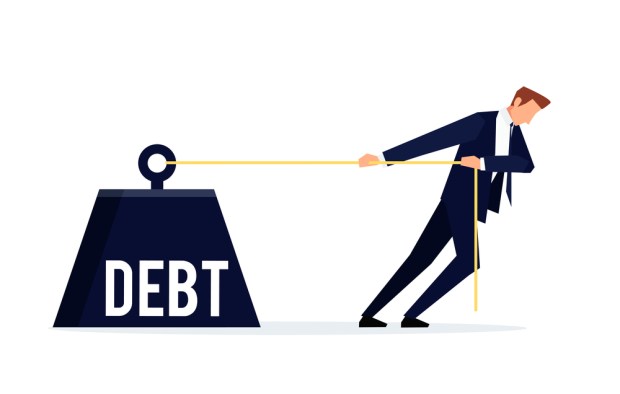Will Consumers Take On Too Much Debt In 2018?

The rate of credit card delinquencies jumped 52 basis points (BPS) in the first quarter (Q1) of 2018, and will likely continue to increase over the next 12 months as consumers take on more debt. That’s according to an analysis from Moody’s on Friday (May 18) after the release of the New York Federal Reserve Bank’s Household Debt and Credit Report.
The rate of new delinquencies on credit cards stood at 6.42 percent in Q1, up from 5.9 percent for the same period last year. According to Moody’s, the delinquency trend for the next year is for an “increase.” The Q1 credit card delinquency rate trails the 7.3 percent rate for auto loans but is higher than the 3.4 percent rate for residential mortgages.
Meanwhile, the rate of total new household debt delinquencies was about 4.5 percent in Q1 of 2018, “down slightly from a year ago,” Moody’s said. “Over the next year, we believe delinquencies will rise a bit as lenders modestly loosen underwriting standards.”
For the third consecutive quarter, the loan growth rate for credit cards increased at a faster annual pace than for auto loans. The year-over-year loan growth rate for credit cards in Q1 of 2018 reached 6.7 percent, higher than the 5.3 percent for auto loans and 3.6 percent for residential mortgages. The three-year annualized loan growth rate for credit cards stands at 6 percent.
Also on the rise are credit card charge-offs — though “the rate of increase appears to have largely plateaued,” Moody’s said. “Performance by banks was mixed again in Q1 2018. The most positive result was reported by Capital One, where year-over-year charge-offs increased only 1 [BPS].”
Moody’s said it expects credit card charge-offs to total around 4 percent for 2018, an increase of about 30 to 40 BPS from 2017.
Overall, the rate of growth for outstanding U.S. household debt reached 3.8 percent, “down materially from Q4 and Q3 growth rates of 4.5 percent and 4.9 percent, respectively, which had been the highest levels since the start of the Great Recession. Growth from the previous quarter was just 1.9 percent annualized,” Moody’s said. “Given the solid employment market and high consumer confidence, we expect the rate of loan growth to increase.”
U.S. household debt stood at $13.2 trillion in Q1 of 2018, according to the Federal Reserve report, with most of the $63 billion increase from the previous quarter coming from mortgages. A recent report from LendingTree, an online loan marketplace, found that, collectively, Americans owe more than 26 percent of their income on consumer debt, up from 22 percent in 2010.
Yet U.S. consumers appear confident about keeping up with their loan payments. The Federal Reserve’s Survey of Consumer Expectations found that, on average, consumers think there is a 10.7 percent chance of them missing a loan payment within the next three months. That is the lowest such reading since the survey launched in 2013.
The picture for credit card debt, however, is less rosy. That same survey report found that consumers who were more than three months behind on their bills, or otherwise in financial distress, were behind on some $12 billion worth of credit card debt as of Jan. 1, 2018. That represents an 11.5 percent increase from Q4 of 2017.
The rest of the year will bring danger that consumers will borrow too much, according to the Moody’s research note on Friday.
“Although consumers’ financial health is generally strong, there is a risk that they will take on too much credit in the present accommodative environment,” Moody’s said. “Auto loan underwriting standards remain weak, and we expect credit card underwriting standards to deteriorate because lenders will likely grow complacent and increase the risk in their consumer loan portfolios — believing that they have plenty of time to tighten before the next downturn. Lenders have repeatedly proved unable to tighten in time.”
